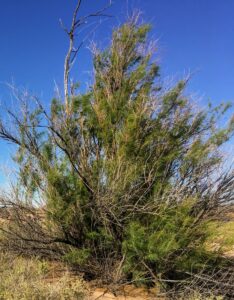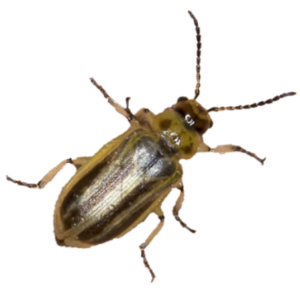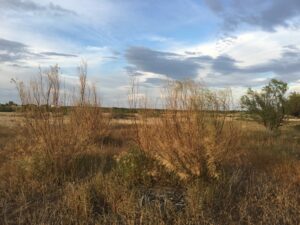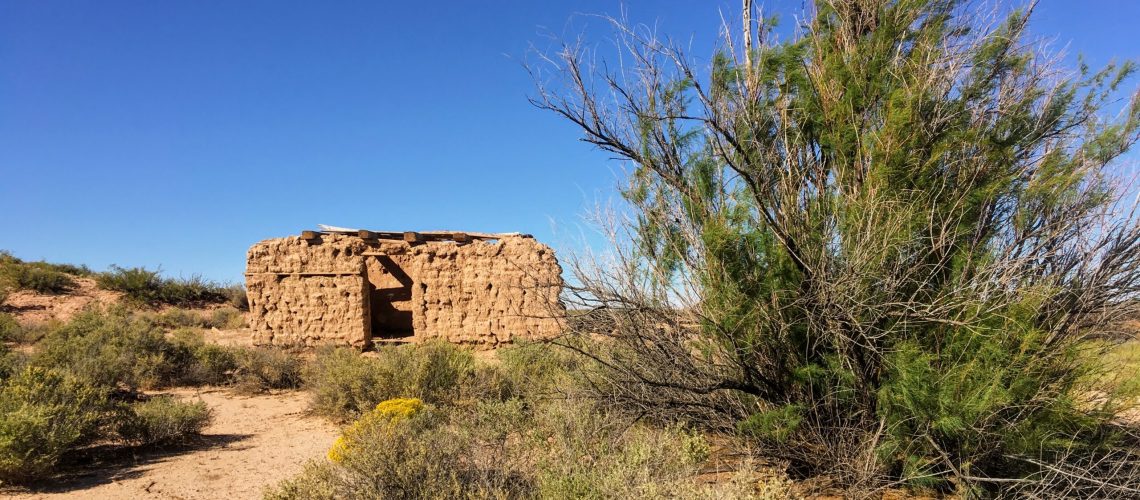Guest Post by Eliza Clark, 2022-2023 Sustainability Leadership Fellow, and Ph.D. Candidate in the Department of Agricultural Biology and the Graduate Degree Program in Ecology at Colorado State University
As a sixth-year PhD student in ecology and evolutionary biology, I see the world from two perspectives. From my ecological training, I understand the interconnectedness of the world – how nutrients and water flow through ecosystems and how the changing of seasons impacts everything from tiny insects to towering trees. I also view those interactions through an evolutionary perspective – how groups of organisms will change over time, in ways both predictable and unpredictable. Both perspectives are vitally needed today. Indeed, many environmental challenges are best understood when we consider both the interconnectedness of the players and the history of change throughout time.
Consider someone who needs prescription lenses. Both the left and right lenses need to be at the correct prescription so the wearer can accurately perceive the distance of objects. Likewise, we more clearly see environmental problems and their sustainable solutions when we use both ecological and evolutionary perspectives. Biological invasions are one environmental problem that illustrates how these perspectives bring into focus both the problem and potential solutions.

Biological invaders are plants and animals that have been moved (by humans or otherwise) to places where they historically didn’t exist and then negatively impact the native ecosystem. Often, biologists study invasive plants from an ecological point of view, to better understand how invaders impact the ecosystem. For example, the invasive plant salt cedar was introduced to the United States in the 1800s and now occupies thousands of miles of riverbanks in Colorado and the southwest, where native communities of willow and cottonwood used to stand. Salt cedar secretes salt from its leaves, which makes the ground beneath the plant too salty for other plants to grow nearby. Beside impacting the native plants, this also alters how frequently fires burn through the area. As a result, salt cedar displaces and threatens native insects and birds. Hence, when we step back and see how the entire ecosystem is impacted by a single invasive species, we can better understand how our native ecosystems are changing and how to manage invasive organisms. Yet, when we view these systems as static and unchanging, we may miss opportunities to control the spread of invasive organisms.

To effectively manage invasive species, scientists must understand their evolutionary histories. Only then can we identify promising control measures. For example, highly specialized insects that feed on invasive weeds, called natural enemies, can slow a weed’s growth and spread. These insects are biological control agents and are alternatives to chemical sprays or manual removal of invasive weeds. The tamarisk beetle was introduced in the US in 2001 to help manage salt cedar and has successfully reduced its abundance in some areas. The tamarisk beetle feeds on the leaves of salt cedar in the larval and adult life stages, then adults lay eggs on salt cedar branches and the cycle starts again. These insects produce two to three generations per year and when they reach high abundances, branches or whole salt cedar trees will die.

The evolutionary history of natural enemies and their host plants makes biological control safe for the environment. These insects have tight evolutionary associations with their host plants, formed over thousands to millions of years. As a result of this relationship, they have developed many features that optimize their entire lifecycle on their specific plant host. This means that these insects are specialist feeders on the target weed and are unlikely to shift to new and unrelated hosts. For example, the tamarisk beetle not only tolerates the salty leaves of salt cedar (which isn’t possible for most other insects), but it actually requires the nutrition that salt cedar provides and can only survive on a few closely related plant species. This tight association with the invasive weed means that native plants and crops are not at risk of being damaged by the tamarisk beetle in the US. The story of salt cedar and the tamarisk beetle is a success for managing invasive plants because scientists examined the interactions between an invasive plant and its natural enemies through an evolutionary lens. When we step back and understand the evolutionary relationship between invasive organisms and their natural enemies, we can better manage these pests.
Although ecological and evolutionary perspectives have often been viewed as distinct fields of biology, they must both be leveraged when controlling invasive organisms. Bridging these disciplines uncovers crucial insights and opportunities to create transformative change. Using both ecological and evolutionary lenses can bring creative and sustainable solutions into focus for many environmental challenges facing our society and planet today.






